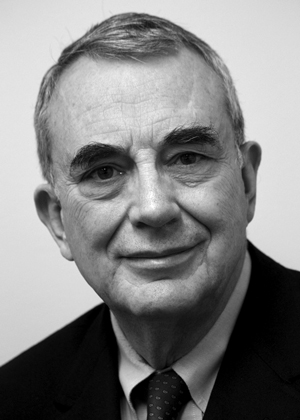Citation

There are few who have given more of their time, talents, and energies to American Geophysical Union (AGU) publications than Louis “Lou” Lanzerotti. His service as founding editor of AGU’s Space Weather: The International Journal of Research and Applications spanned more than an 11-year solar cycle. Lou shaped a publication that became AGU’s flagship journal for societal relevance. In the very first issue, the journal’s primary goal was front and center: “Promote communication among scientists, engineers, technicians, science administrators, and space weather policy makers in a way that leads to continuous improvement in the nation’s ability to mitigate space environment hazards to technical systems on the ground and in space.”
In 2001 Lou developed a strategic vision for an AGU publication that captured and archived the rapid advances in space weather science and invited community input to policies related to the developing science of space weather. He saw a need for technical articles that reported peer-reviewed scientific advances and feature articles that suggested new paths for exploring space weather observations and forecasting capabilities. Lou actively sought opinion and commentary that informed a broad community of space weather stakeholders. He encouraged submission of news articles and meeting reports that promoted national and international engagement. As editor in chief, Dr. Lanzerotti wrote more than 50 editorials on a broad range of topics, a clear demonstration of his breadth of knowledge across the full extent of space weather. He did this as a labor of love for the discipline of space weather and for the success of the journal.
Perhaps the most significant accomplishment of all is that Space Weather set the stage for a most far-reaching government action: the rolling out of the National Space Weather Strategy and Action Plan by the U.S. president’s Office of Science and Technology Policy in October 2015. So not only has the science been served by this journal, but also it has led to political action that will have an impact on the future of the country for years to come. There can be no higher accomplishment for a scientific and technical journal that aspires to affect public policy. And it was all done under the inspirational leadership of Prof. Louis Lanzerotti.
Dr. Louis Lanzerotti is fully deserving of the William Kaula Award recognizing “unselfish service to the scientific community through extraordinary dedication to, and exceptional efforts on behalf of, the Union’s publications program.”
—Delores J. Knipp, University of Colorado Boulder
Response
It was such a great surprise to receive the letter from AGU president Margaret Leinen in July announcing the AGU William Kaula Award. I sincerely thank Dr. Delores Knipp for her most generous words in the nomination, and I thank my colleagues Dr. Tom Krimigis, Dr. Mike Liemohn, and Dr. Howard Singer for their support. I knew Bill Kaula and always admired his strong support for scientific publishing by AGU and by nonprofit scientific professional societies. I also have been privileged to know several past recipients of the Kaula Award. I am honored to join their ranks.
I came to the editorship of Space Weather from a nearly 40-year background in the communications industry. Contrary to the occasional impression of an ivory tower environment, the research at Bell Laboratories had an underlying mission focus: communications in all of its forms. That is what attracted me to Bell Labs after my Ph.D. and following the launch of the first active telecommunications satellite, Telstar 1. This focus guided the basic as well as the more applied research. Space-weather-related research, while never a large or central activity, was seen to span both the basic and the applied areas and was of importance to communications. Fundamental knowledge of Earth’s space environment was needed (and all the more so following the discovery of the trapped radiation environment where communications satellites were to fly). And this included comparisons of Earth’s environment with that of solar system planets with magnetospheres to gain more fundamental knowledge. At the same time, the fundamental knowledge that was acquired needed to be used to advise and improve and advance communications, whether by cable, by wireless, or by satellites. My colleagues and I thrived in this environment that posed everyday challenges in basic research and in engineering-related applications.
I brought my science and engineering background experiences to Space Weather when we began the journal. I was pleased that AGU, especially under the Publications Committee, Executive Director Fred Spilhaus, and Publications Director Judy Holoviak, was enthusiastic about the new AGU publications directions that this applications-oriented journal would take. We all agreed that Space Weather would incorporate new publishing elements such as editorials on applied topics of the day, commentaries, and feature articles. The result after more than a solar cycle is the dynamic journal today, setting international standards under the capable editorship of Dr. Delores Knipp.
—Louis J. Lanzerotti, New Jersey Institute of Technology, Newark
Citation:
(2017), Louis J. Lanzerotti receives 2016 William Kaula Award, Eos, 98, https://doi.org/10.1029/2017EO064193. Published on 04 January 2017.
Text © 2017. The authors. CC BY-NC-ND 3.0
Except where otherwise noted, images are subject to copyright. Any reuse without express permission from the copyright owner is prohibited.
